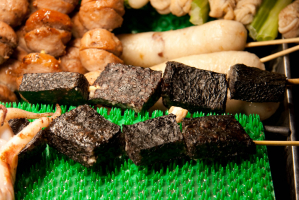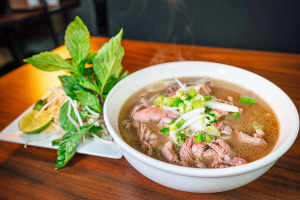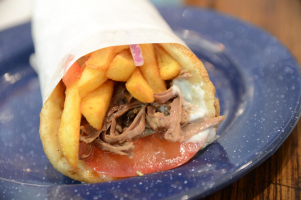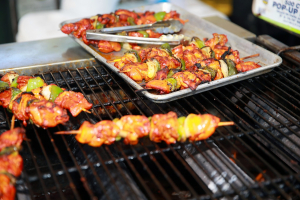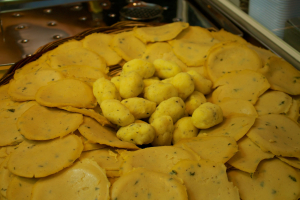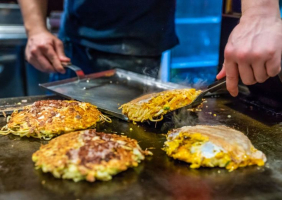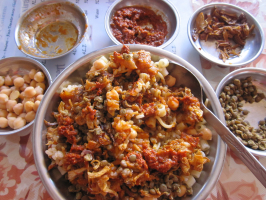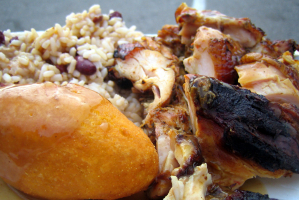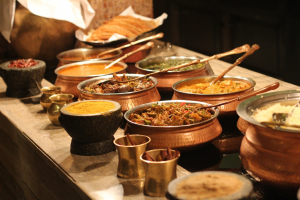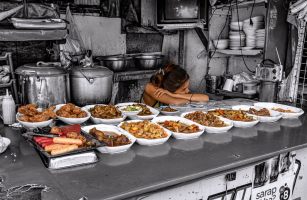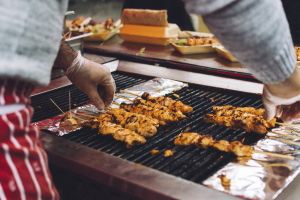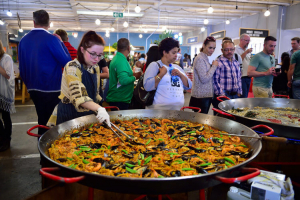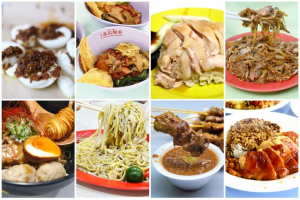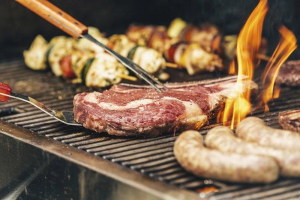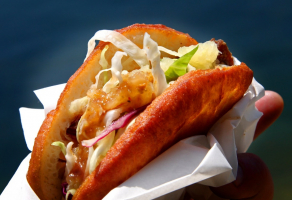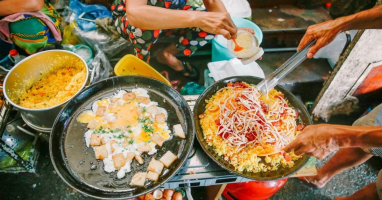Top 10 Most Popular Spanish Street Foods
Discover the vibrant flavors of Spain with a Toplist guide to the most popular Spanish street foods! Get ready for a flavorful journey through the streets of ... read more...Spain, where every bite tells a story of rich culture and unstoppable tastes. Enjoy the best of Spanish street food and let your taste buds dance with joy!
-
Churros are a delightful Spanish treat that has captured hearts around the world. These fried dough pastries are known for their long, slender shape and irresistibly crispy exterior. The dough is typically made from a simple mixture of flour, water, and salt, creating a versatile base for the following deliciousness.
Once the churro dough is prepared, it's piped through a star-shaped nozzle, giving it its iconic ridges. The dough is then deep-fried until golden brown, resulting in a crunchy texture on the outside and a soft, doughy inside. To add an extra layer of sweetness, churros are often coated in a generous dusting of cinnamon sugar.
Churros are commonly enjoyed for breakfast, dessert, or a delightful snack. They pair perfectly with a cup of rich hot chocolate, making for a classic Spanish indulgence known as "churros con chocolate." In addition to the traditional straight churros, you might find them in looped or spiral shapes, each variation offering a unique and delightful experience.
These golden treats are popularly sold by street vendors, at fairs, and in cafes across Spain, creating a warm and comforting aroma that beckons locals and tourists alike. Whether dipping them in chocolate caramel or enjoying them on their own, churros are a beloved symbol of Spanish culinary joy.
Main ingredients: flour, olive oil, sugar, salt
Recommended place: Chocolatería San Ginés in Madrid, Spain
Price range: from $2 to $5 per serving; in gourmet eateries, or specialty dessert shops may cost $6 to $10 or more
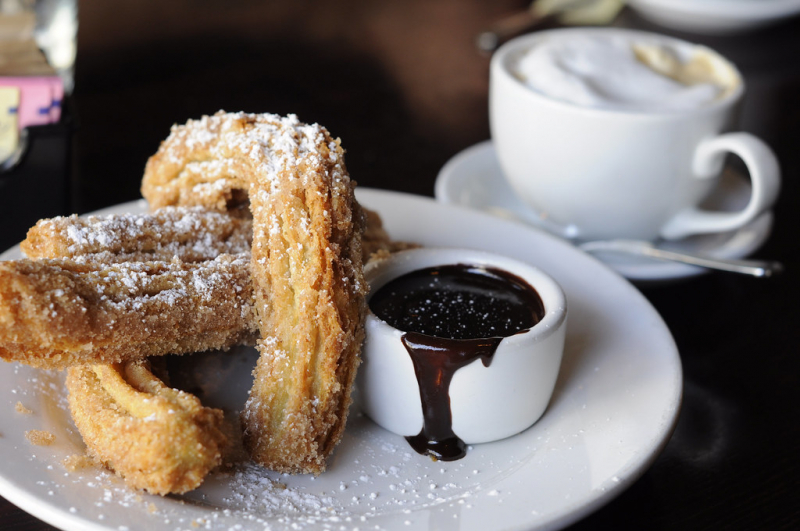
Photo by https://www.flickr.com/photos/45935274@N00/6898001519 Video by @DWFood -
Empanadas, a cherished delight in Spanish-speaking cultures, are savory pastries loved for their delicious fillings and flaky crusts. The name "empanada" itself comes from the Spanish verb "empanar," meaning "to wrap in bread."
These delectable treats consist of a thin, unleavened dough folded or rolled around a tasty filling, creating a half-moon or crescent shape. The dough is often made with flour, water, and sometimes lard or butter, giving it a satisfyingly crisp texture when baked or fried.
The fillings vary widely, offering diverse flavors to suit different preferences. Popular choices include seasoned meats like beef or chicken mixed with vegetables, spices, and sometimes hard-boiled eggs or olives for an extra burst of flavor. Vegetarian options with ingredients like cheese, beans, or spinach are also widely enjoyed.
Empanadas are versatile and enjoyed at various times of the day – as a snack, appetizer, or even a full meal. They are often sold by street vendors, in bakeries, or at family gatherings and celebrations.
Every Latin American country has its own spin on empanadas, contributing to the rich tapestry of flavors across the region. These handheld wonders have become a symbol of community, comfort, and the joy of sharing good food with loved ones.
Main ingredients: flour, salt, meat (beef, chicken, pork), vegetables (onions, bell peppers, tomatoes), spices
Recommended place: La Fabrica in Barcelona, Spain
Price range: from $1 to $4 per empanada; in some upscale restaurants or specialty shops, the prices might be slightly
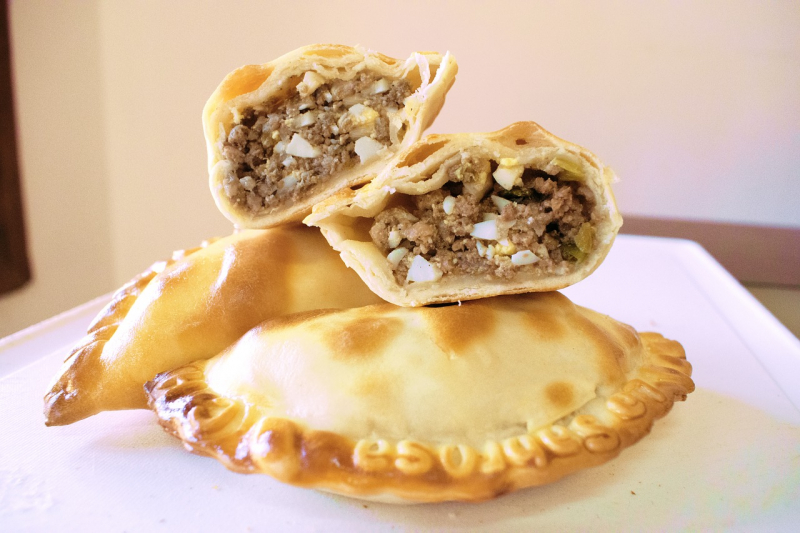
Photo by https://www.needpix.com/photo/1663575/empanadas-food-fried-lunch-meat-chicken-crispy-home-restaurant Video by @Munchies -
Paella is a vibrant and flavorful Spanish dish that originated in Valencia. It's a rice-based dish renowned for its rich taste and colorful presentation. The main ingredients typically include rice, saffron, and a variety of proteins such as chicken, rabbit, seafood, or a combination.
The rice is cooked in a wide, shallow pan called a paellera to prepare paella. Saffron, a key spice, gives the dish its distinctive yellow color and contributes to its unique taste. The choice of proteins can vary based on personal preference and regional influences.
The cooking process involves creating a flavorful broth using ingredients like tomatoes, onions, garlic, and a blend of spices. The rice is then added to the broth and cooked until it absorbs the delicious flavors, creating a slightly crispy layer at the bottom known as socarrat.
Paella is often enjoyed as a communal dish, bringing people together around the table to savor its delicious and comforting flavors. It symbolizes Spanish culinary tradition and is popular at gatherings, celebrations, and family events.
This iconic dish has many regional variations, each with its own twist on ingredients and flavors. Whether prepared with seafood along the coastal areas or rabbit and beans further inland, paella captures the essence of Spanish cuisine. It is a must-try for food enthusiasts exploring the diverse flavors of Spain.
Main ingredients: olive oil, arroz bomba (Spanish rice), meat, seafood (shrimp, mussels, clams, squid), seasonal vegetables, spices
Recommended places: Casa Roberto and La Pepica in Valencia, Spain
Price range: from $8 to $15 per portion; at a mid-range restaurant, you can expect to pay around $15 to $30 per person for a serving
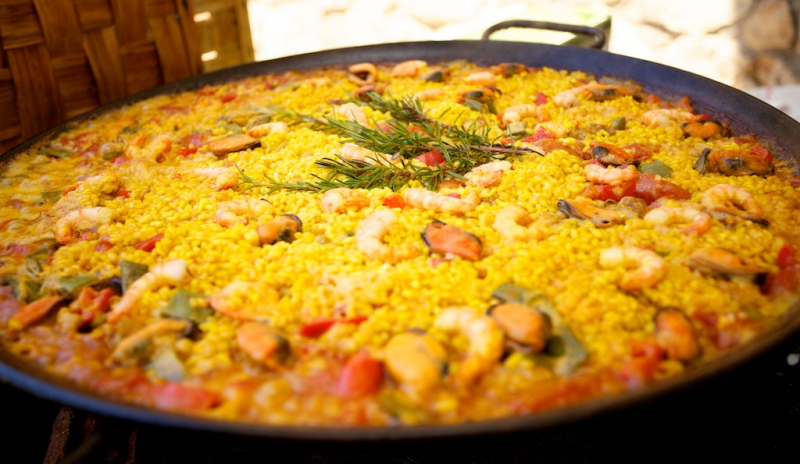
Photo by https://www.flickr.com/photos/saynototheoffice/7892935092 Video by @DWFood -
Patatas Bravas is a beloved Spanish dish that has captured the hearts and taste buds of food enthusiasts around the world. These tasty tapas consist of crispy, golden-brown potatoes, typically cut into bite-sized chunks, and are a staple in Spanish cuisine.
The potatoes are first parboiled, ensuring a soft interior, before being fried until they achieve a delightful crunchiness. What sets Patatas Bravas apart is the flavorful sauce that accompanies it. The sauce, known as "salsa brava," is a spicy and tangy tomato-based concoction, often featuring garlic, paprika, and sometimes a touch of vinegar. It adds a zesty kick that elevates the dish.
Patatas Bravas are not just a treat for the taste buds but also a social experience. Often served in small plates, they are perfect for sharing among friends or enjoying as a side dish with a refreshing beverage. The combination of crispy potatoes and the bold flavors of the sauce makes Patatas Bravas a delightful and satisfying snack.
Whether you're strolling through the lively streets of Barcelona or enjoying tapas at a local Spanish restaurant, Patatas Bravas is a must-try. Its simple yet robust flavors showcase the essence of Spanish culinary culture, and the dish's popularity extends far beyond Spain, making it a favorite worldwide.
Main ingredients: potatoes, tomato sauce, onion, garlic, paprika, aïoli (made by garlic, salt, olive oil, and sometimes egg yolks)
Recommended places: Bar Tomás de Sarrià in Barcelona; Docamar in Madrid, Spain
Price range: around $5 to $10 for a serving; in more upscale or tourist-oriented restaurants, prices from $10 to $15 or more
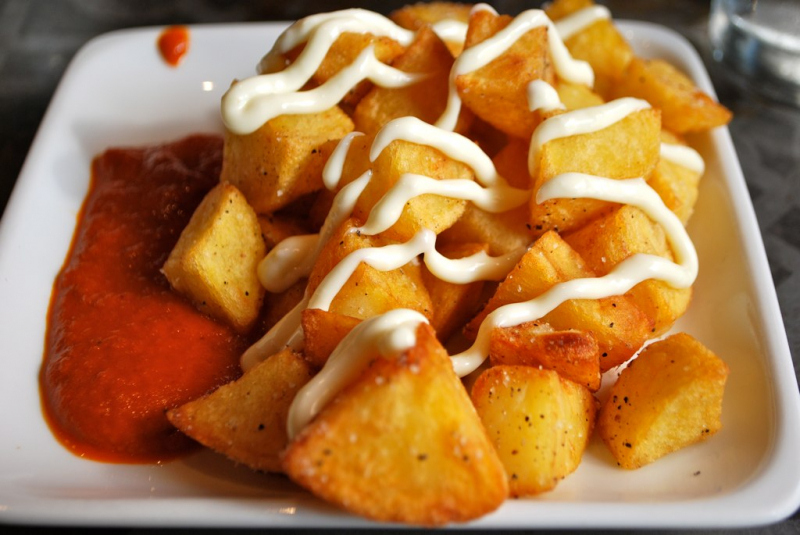
Photo by https://www.flickr.com/photos/jesswebb/4168435730 Video by @SpainonaFork -
Espetos are a charming Spanish dish that embodies the essence of Mediterranean cuisine. These skewers of grilled meats, usually featuring fresh fish or juicy seafood, are popular and beloved street food in Spain.
The preparation of Espetos is a culinary art form. Fresh and high-quality ingredients, often sourced locally, are threaded onto skewers and grilled to perfection over an open flame. The skewers are typically seasoned with simple yet flavorful combinations of olive oil, garlic, salt, and sometimes a dash of lemon juice. The result is a smoky, charred exterior that gives way to tender and juicy bites.
Espetos are a versatile dish showcasing the bounty of the sea. Common choices for skewering include sardines, prawns, or cuttlefish. The seaside regions of Spain, especially in areas like Andalusia, are renowned for their Espetos, where the sea-to-skewer concept is a celebrated tradition.
These skewers are not just a meal; they are an experience. Whether enjoyed at a beachside chiringuito (a Spanish beach bar) or a local seafood restaurant, Espetos captures the essence of Spanish coastal living. The communal and relaxed atmosphere of sharing skewers with friends adds to the overall enjoyment of this fundamental Spanish street food. It's a gastronomic journey that transports you to the sun-drenched shores of Spain with every flavorful bite.
Main ingredients: sardines, olive oil, lemon juice, salt
Recommended place: Miguelito El Cariñoso Restaurant in Málaga, Spain
Price range: from $3 to $8 USD per skewer; in more touristy areas or upscale restaurants, the prices more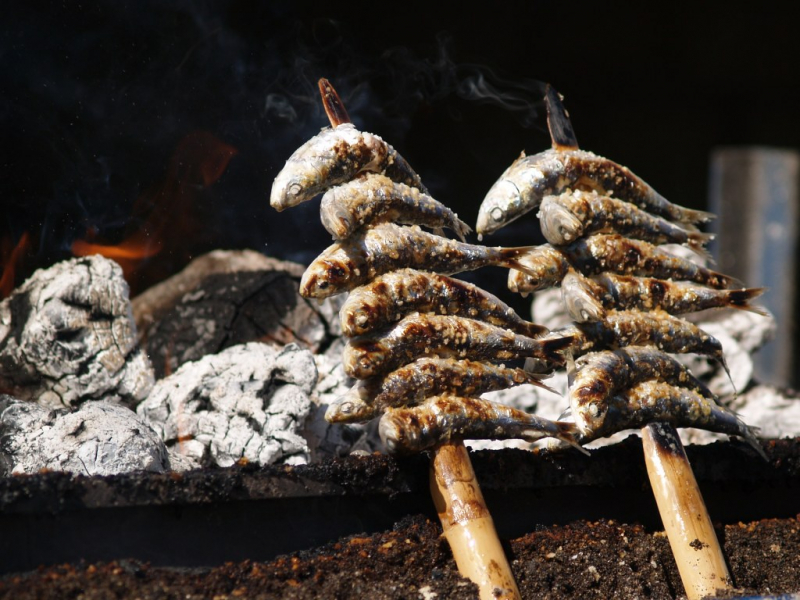
Photo by https://www.flickr.com/photos/teclasorg/1435081938 Video by @spainholiday -
Bocadillo is a Spanish sandwich that's simple, delicious, and bursting with flavor. These delightful treats are a staple in Spanish cuisine and come in various forms, making them a versatile and satisfying option for a quick bite.
The heart of a Bocadillo is the bread. A crusty baguette or roll is typically used, providing the perfect base for the layers of goodness that follow. The bread is then generously filled with a variety of ingredients, offering a diverse range of flavors. Common fillings include cured meats like jamón (Spanish ham), chorizo, or lomo (cured pork loin). Cheese, often Manchego or another local variety, adds a creamy and savory touch. Additionally, Bocadillos can feature vegetables such as tomatoes, lettuce, or roasted peppers, providing a refreshing crunch.
One of the charming aspects of Bocadillos is their versatility. They are enjoyed throughout the day, from a quick snack to a light lunch or dinner. The simplicity of the ingredients allows the flavors to shine, creating a satisfying experience for locals and visitors alike.
The beauty of Bocadillos lies in their simplicity and the quality of their ingredients. The combination of fresh, high-quality components creates a harmony of flavors that's both satisfying and distinctly Spanish. Whether strolling through a busy market or relaxing at a café, a Bocadillo is a flavorful companion that embodies the essence of Spanish street food culture. So, next time you're in Spain, don't miss the chance to savor the delightful experience of a Bocadillo.
Main ingredients: barra de pan (Spanish-style baguettes), cured meat (jamón, chorizo, lomo), cheese, spices
Recommended places: La Xampanyeria in Barcelona; El Brillante de Atocha in Madrid, Spain
Price range: from $5 to $15 for a Bocadillo in a casual restaurant, cafe, or street food vendor in Spain
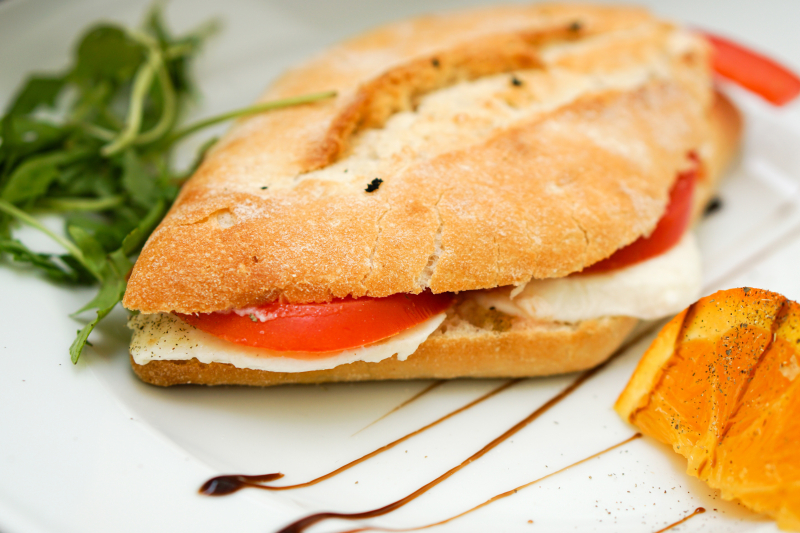
Photo by https://pxhere.com/vi/photo/1615854 Video by @superpilopi -
Tortilla Española, or Spanish omelette, is a classic and beloved dish in Spain. It's a simple yet hearty creation that reflects the essence of Spanish home cooking. The main ingredients are eggs, potatoes, onions, and olive oil. To make this dish, thinly sliced potatoes, and onions are sautéed until tender in olive oil, creating a flavorful base. These ingredients are then mixed with beaten eggs and cooked until the omelette sets. The result is a thick and satisfying dish with a golden-brown exterior and a soft, almost creamy interior.
One of the great things about Tortilla Española is its versatility. While the basic version includes just eggs, potatoes, and onions, variations may incorporate additional ingredients like bell peppers, chorizo, or even greens, adding extra layers of flavor.
Tortilla Española is often served as a tapa, a small appetizer or snack, but it can also be a substantial meal when accompanied by a side salad or bread. It's a staple at family gatherings, picnics, and potlucks, symbolizing the warmth and conviviality of Spanish hospitality.
When in Spain, you can find Tortilla Española in restaurants, cafes, and households across the country. It's a comfort food that captures the heart of Spanish cuisine, offering a taste of tradition and a delightful experience for food enthusiasts exploring the rich culinary landscape of Spain.
Main ingredients: eggs, potatoes, olive oil, salt
Recommended place: Cal Pep in Barcelona, Spain
Price range: at a casual restaurant, tapas bar, or café can expect to pay from $5 to $15 for a portion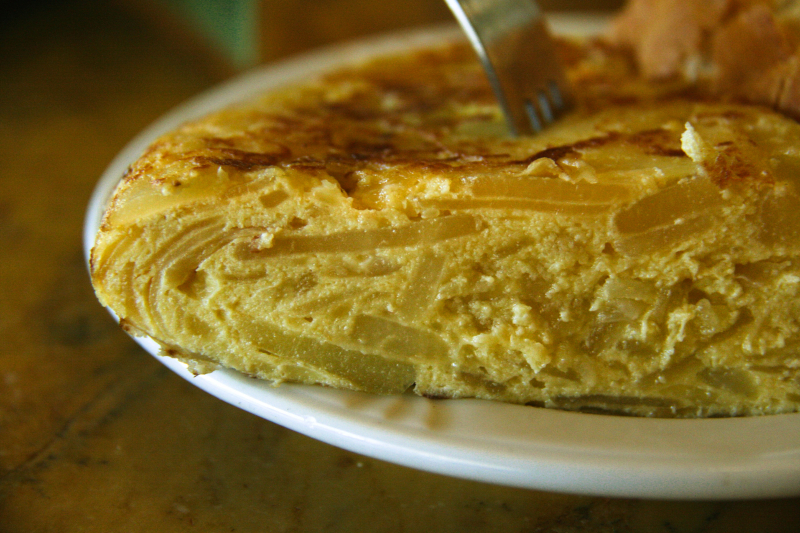
Photo by https://commons.wikimedia.org/wiki/File:Tortilla_de_Patatas_%28Corte_transversal%29.jpg Video by @SpainonaFork -
Buñuelo is a delightful Spanish and Latin American treat that brings joy with every bite. These golden, fried dough balls are a popular dessert enjoyed in various cultures, each with its own unique twist.
Buñuelos are typically made from a simple batter consisting of flour, eggs, milk, sugar, and baking powder. Some variations might include additional ingredients like anise, orange zest, or cinnamon, adding aromatic and flavorful notes. The dough is shaped into small balls or patties before being deep-fried to perfection. The result is a sweet and golden treat that's often dusted with powdered sugar or glazed for an extra touch of sweetness.
These delightful pastries have become a cherished part of celebrations and festive occasions, gracing tables during holidays and special events. Buñuelos are not only beloved in Spain but have also found their way into the hearts of Latin American countries, each region infusing its own unique twist to the recipe.
Whether enjoyed with a sprinkle of sugar, a drizzle of syrup, or a cup of hot chocolate, buñuelos are a delightful treat that brings joy and sweetness to any occasion. Buñuelos are not only delicious but also carry a cultural significance, especially during festive occasions and holidays. Families often gather to make and enjoy these treats together, adding a warm and communal aspect to the experience.
Main ingredients: milk, eggs, butter, flour, baking powder
Recommended place: La Maruca in Madrid, Spain
Price range: range from $1 to $3 USD per piece
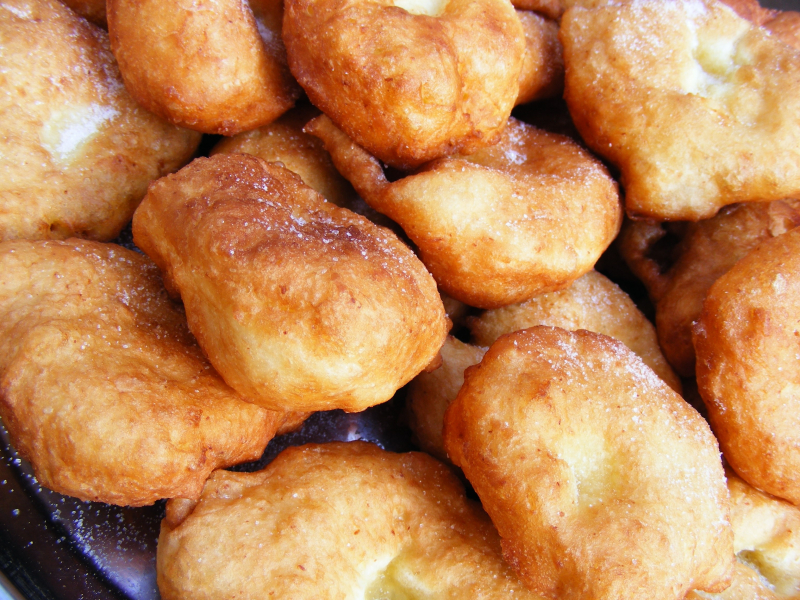
Photo by https://www.peakpx.com/diet/2?sort=latest Video by @Annarecetasfaciles -
Leche Frita, which translates to "Fried Milk," is a traditional Spanish dessert with a special place in the hearts of those with a sweet tooth. This delightful treat is known for its crispy exterior and creamy interior, creating a harmonious blend of textures and flavors.
The key ingredients for Leche Frita include milk, sugar, flour, and cinnamon. The preparation involves creating a thick custard-like mixture with these ingredients, which is then allowed to set and cool. Once set, the mixture is cut into shapes, typically squares, and coated with breadcrumbs before deep-fried to achieve a golden, crispy exterior. The final touch often involves dusting cinnamon, sugar, or a drizzle of honey.
Leche Frita is a beloved dessert, especially during traditional Spanish celebrations and family gatherings. Its combination of familiar flavors and unique preparation methods makes it a standout in Spanish sweets. While its origins are deeply rooted in Spain, variations of fried milk desserts are also found in other cultures.
Leche frita's crisp exterior and creamy interior offer a delightful contrast, making it a memorable and satisfying dessert for those with a sweet tooth and an appreciation for Spanish culinary delights.
Main ingredients: milk, sugar, flour, cinnamon, cornstarch, olive oil
Recommended place: Asador Las Cubas in Arévalo, Spain
Price range: from $2 to $5 per portion, depending on the location and presentation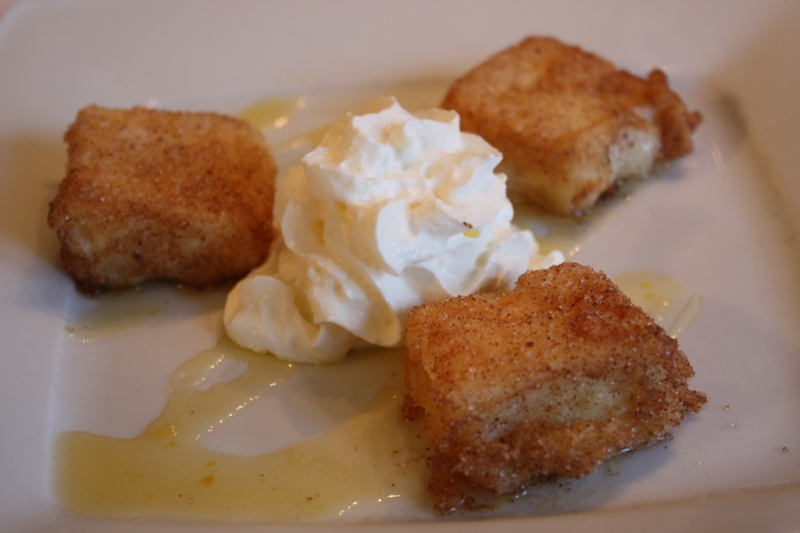
Photo by https://www.flickr.com/photos/jlastras/3175251826 Video by @Annarecetasfaciles -
Pintxos, pronounced "pinchos," are delightful bite-sized culinary treasures hailing from the Basque region of Spain. These miniature wonders are a testament to the creativity and rich gastronomic culture of the Spanish people.
Pintxos are essentially small snacks or appetizers served on a skewer or toothpick. The flavors are diverse, ranging from savory to sweet. Common ingredients include olives, cheeses, cured meats, seafood, and vegetables. Each pintxo is a burst of flavor, often reflecting the regional ingredients and culinary traditions.
Pintxos are known for their artistic and appealing presentation. They are showcased on the counters of bars and taverns, allowing patrons to select their favorites. The variety is vast, and the colorful display is as much a feast for the eyes as it is for the palate. Some pintxos are cold and ready to eat, while others are heated or assembled to order.
Sharing pintxos is not just about the food; it's a social and cultural experience. In many Basque regions, it's customary to hop from one bar to another, trying different pintxos and refreshing beverages like Txakoli, a local white wine. Pintxos represent a culinary adventure, inviting both locals and visitors to savor the essence of Spanish gastronomy in small, flavorful bites.
Main ingredients: olives, cheeses, cured meats, seafood, vegetables
Recommended place: La Tasqueta de Blai in Barcelona, Spain
Price range: around $1 to $5 USD per pintxo
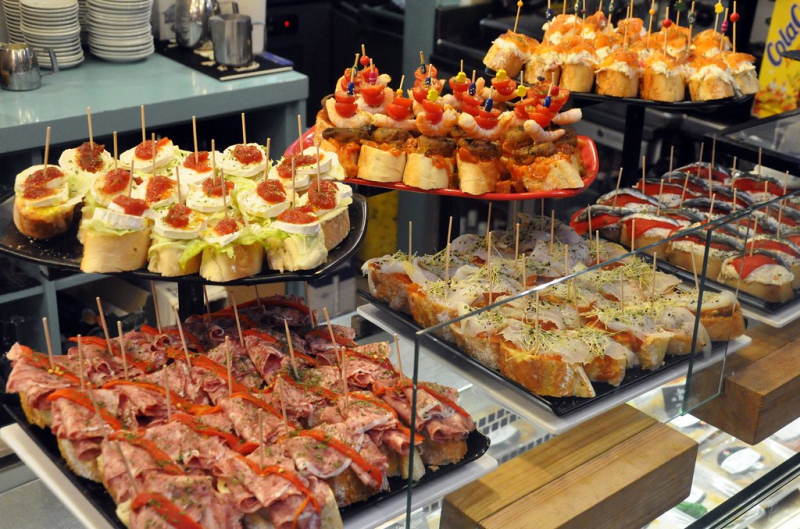
Photo by https://www.flickr.com/photos/20792787@N00/48429840036 Video by @locavore_eats












